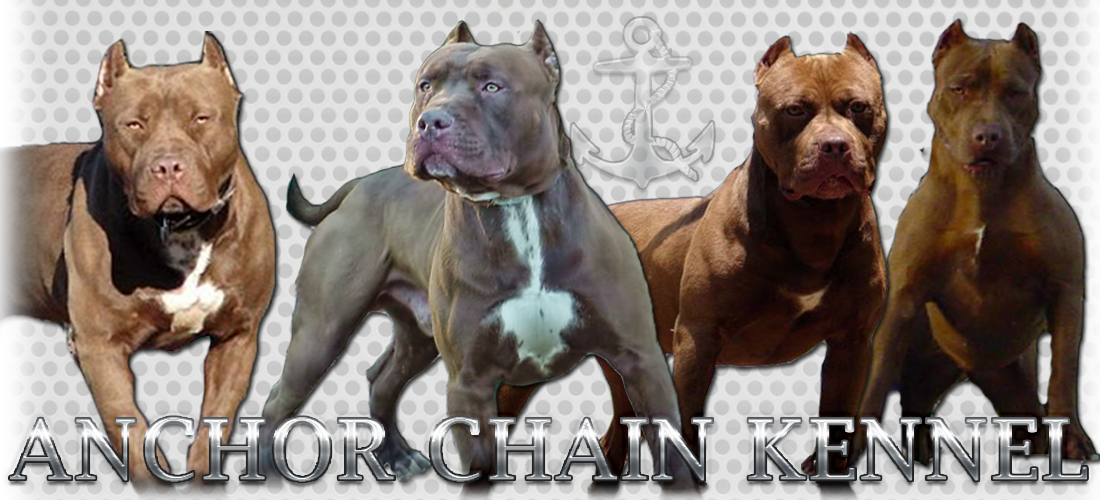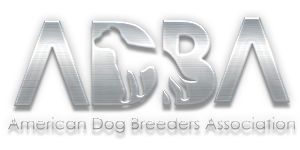History
Although the APBT and many other modern breeds possess a canine ancestry that fought other animals, whether bulls, boars, bears, lions, or other dogs, that was not their sole or primary function. Indeed, the APBT excels at fighting-no other breeds can match him-but. Let's look at the different parts of this ancient breed. The APBT was used to work with various large animals, including domestic cattle. His talents have been utilized by hunters as a holding dog, stockmen as a catch dog, farmers as a watchdog, and gamblers as a fighter. The modern-day APBT is primarily kept as a pet and family companion. One of the many detrimental myths of this breed is that they are mainly bred and maintained as a fighting dog. The reality is that a tiny and ever decreasing percentage of APBTs were ever used for professional fighting. The pro-dog fighter tends to prefer small (35lbs or so) skinny dogs, which, due to their size, are not suited for many of the tasks asked of the modern-day working dog. The historical truth is that the APBT has done well and thrived at whatever challenges it has been asked to perform.
You may often hear the APBT referred to simply as a bulldog. Several centuries ago, the bulldog was an agile, muscular dog of medium size, quite capable of participating in the bull and bear-baiting events of its time. Bulldogs were admired for their intelligence, physical courage, gameness, and pain tolerance. These are all desirable qualities for dogs working with animals, many times their size. Artists' renderings of the bulldog of the 18th and 19th centuries show a canine of extreme similarity to the modern APBT. This similarity has led many to claim that the contemporary APBT is the original pure Bulldog of the British Isles. Other records do not support this. There are references claiming crosses between bulldogs and terriers. The reasons for crossing the two were to increase speed and activity by adding the time's agile and active hunting terriers. Some state that the bull-and-terrier breeds resulted from the interbreeding of the White English terrier. Others state that several types of larger hunting terriers were used in crossing. It has been pointed out that some bull-and-terrier breeds had wiry coats and various colors not found in bulldogs or White English terriers. The dog fighters were among the first to keep records about pedigrees. England, Scotland, Ireland, and the United States brought the bull-and-terrier breeds to their ultimate fighting form. Each country has its variety. England had the Staffordshire bulls, Scotland the Blue Paul, and Ireland exported many red-nosed dogs known as the Old Family Red-Nosed Line to America.
The APBT has been a victim of a great deal of bad publicity. While the APBT is no perfect angel, other breeds are often mistaken as the APBT. Often the APBT gets the blame for the actions of these canines. Boxers, American bulldogs, Bull terriers, English bulldogs, Great Danes, Mastiffs, Labs, and mixed breeds……all have been mistakenly branded as APBT at one time or another. Even with all the negative publicity, the APBT has remained very popular. Popularity is not always a good thing. It has come with its price, attracting a group of so-called breeders with dollar signs in their eyes, doing absolutely nothing to improve the breed. Dogs that should never have been considered for a breeding program have been bred repeatedly with no regard for temperaments, intelligence, health, or genetic defects. Over the years, the public has heard all the stories about this "canine loose cannon," which attracted some people to the breed for the wrong reasons. People who should have never had this powerful breed could get dogs that should never have been bred, making for a horrible combination.
The APBT chosen from a well-bred litter will not be any more problem than any other breed and less than most. If the APBT were making a debut for the first time, general perception would be different. There would be no fighting history, and the breed would not have been hurt by overbreeding. If you were to look at the APBT for the first time, you would see an exceptional breed. It has a short, easy-to-groom coat in many colors. It is large enough to be a protection dog but small enough to fit in with most families. APBTs are intelligent, easy to housebreak, and do well in obedience. They are protective but no more aggressive than any other working breeds. The breed is an attractive, versatile breed with many excellent qualities.
Whatever the origin is believed to be, what we have is one of man's most determined, intelligent, loyal breeds. American Pit Bull Terrier don't settle for anything less.
You may often hear the APBT referred to simply as a bulldog. Several centuries ago, the bulldog was an agile, muscular dog of medium size, quite capable of participating in the bull and bear-baiting events of its time. Bulldogs were admired for their intelligence, physical courage, gameness, and pain tolerance. These are all desirable qualities for dogs working with animals, many times their size. Artists' renderings of the bulldog of the 18th and 19th centuries show a canine of extreme similarity to the modern APBT. This similarity has led many to claim that the contemporary APBT is the original pure Bulldog of the British Isles. Other records do not support this. There are references claiming crosses between bulldogs and terriers. The reasons for crossing the two were to increase speed and activity by adding the time's agile and active hunting terriers. Some state that the bull-and-terrier breeds resulted from the interbreeding of the White English terrier. Others state that several types of larger hunting terriers were used in crossing. It has been pointed out that some bull-and-terrier breeds had wiry coats and various colors not found in bulldogs or White English terriers. The dog fighters were among the first to keep records about pedigrees. England, Scotland, Ireland, and the United States brought the bull-and-terrier breeds to their ultimate fighting form. Each country has its variety. England had the Staffordshire bulls, Scotland the Blue Paul, and Ireland exported many red-nosed dogs known as the Old Family Red-Nosed Line to America.
The APBT has been a victim of a great deal of bad publicity. While the APBT is no perfect angel, other breeds are often mistaken as the APBT. Often the APBT gets the blame for the actions of these canines. Boxers, American bulldogs, Bull terriers, English bulldogs, Great Danes, Mastiffs, Labs, and mixed breeds……all have been mistakenly branded as APBT at one time or another. Even with all the negative publicity, the APBT has remained very popular. Popularity is not always a good thing. It has come with its price, attracting a group of so-called breeders with dollar signs in their eyes, doing absolutely nothing to improve the breed. Dogs that should never have been considered for a breeding program have been bred repeatedly with no regard for temperaments, intelligence, health, or genetic defects. Over the years, the public has heard all the stories about this "canine loose cannon," which attracted some people to the breed for the wrong reasons. People who should have never had this powerful breed could get dogs that should never have been bred, making for a horrible combination.
The APBT chosen from a well-bred litter will not be any more problem than any other breed and less than most. If the APBT were making a debut for the first time, general perception would be different. There would be no fighting history, and the breed would not have been hurt by overbreeding. If you were to look at the APBT for the first time, you would see an exceptional breed. It has a short, easy-to-groom coat in many colors. It is large enough to be a protection dog but small enough to fit in with most families. APBTs are intelligent, easy to housebreak, and do well in obedience. They are protective but no more aggressive than any other working breeds. The breed is an attractive, versatile breed with many excellent qualities.
Whatever the origin is believed to be, what we have is one of man's most determined, intelligent, loyal breeds. American Pit Bull Terrier don't settle for anything less.


